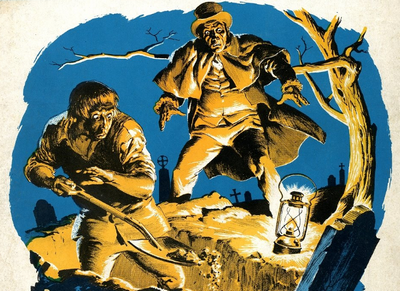Vampirism is said to be epidemic in character: where one instance is discovered it is almost invariably followed by several others. It is believed that the victim of a vampire pines away and dies and becomes in turn a vampire after death, and so duly infects others.
After the disinterment of a suspected vampire, various well-known signs are looked for by experienced persons. Thus, if several holes about the breadth of a man’s finger are observed in the soil above the grave, the vampire character of its occupant may be suspected. The corpse is usually found with wide-open eyes, ruddy, life-like complexion and lips, a general appearance of freshness, and shows no signs of corruption.

It may also be found that the hair and nails have grown as in life. On the throat, two small livid marks may be observed. The coffin is also very often full of blood, the body has a swollen and gorged appearance, and the shroud is frequently half-devoured. The blood contained in the veins of the corpse is found, on examination, to be in a fluid condition as in life, and the limbs are pliant and have none of the rigidity of death.
With a basic knowledge of decomposition these signs can be explained. The lack of fresh air and substantially lower temperature of the Earth below can, for lack of a better word, refrigerate a corpse therefore slowing down outer signs of decomposition.
In the case of bloated corpses, blood would be pushed to the surface of the skin, causing rosy cheeks, red lips and even blood in the mouth. When oxygen hits blood, it binds itself to the hemoglobin, causing the shape and appearance of blood to change. Because of the constant temperature and conditions of being underground, it would take longer for blood to dry up and no longer have a bright red appearance.
